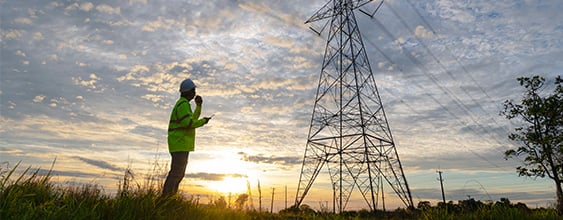Making the most of TNFD requires a cross-functional team that can collect essential data, interview key stakeholders, interpret findings to identify gaps and opportunities, evaluate current targets and propose new ones, and engage in reporting.
Here are three initial steps that can help:
TNFD LEAP approach stands for Locate, Evaluate, Assess and Prepare. It starts with the business exploring its processes to “locate” interfaces with nature, both within operations and across the value chain.
Next, companies “evaluate” and measure dependencies and impacts, considering environmental assets and ecosystem services (think: crops like almonds that depend on the “services” of bees or the economic value of water purification provided by forests, which may be at risk.)
During the “assess” stage, teams explore opportunities as well as risks. The outcome of a nature-related risk assessment will then be used as an input to the materiality assessment. By considering the likelihood of risks and the potential business impact, they can re-prioritize existing risk mitigation and opportunity management.
“Prepare” involves developing resource allocation plans, new targets and reporting and presentation strategies. Companies like Nestle and Suntory have already conducted this type of assessment and are piloting Science-based Targets for Water.
TNFD alignment is important to ensure compliance and bolster current corporate responsibility reporting and can provide information of interest to stakeholders such as investors and customers. There is also considerable benefit to the LEAP process itself.
Companies can use interviews and workshops to collect information, validate results and generate buy-in around the importance of action on nature-related issues. Companies also should consider ways to integrate TNFD into existing approaches to enterprise risk management and reporting.
Understand from the start that this can take months to implement and could take years to develop a strong level of maturity around this process. It can help to develop a long-term project plan, breaking more complex elements into manageable tasks and looking for ways to build trust and engagement.
In the food and beverage industry, the majority of nature-related impacts and dependencies are likely to center around farms from which a company’s ingredients are sourced. Trusted relationships and greater transparency throughout the supply chain can lead to more accurate and informative TNFD assessments, strategies and actions.
Two primary drivers of farm-level nature-related impacts and dependencies are location (such as water-stressed or biodiversity-rich areas) and farming practices, which can variously contribute to environmental degradation or advance soil quality and nature’s regenerative properties. Encouraging nature-positive farming practices is one way that many forward-thinking food and beverage companies are already strengthening their supply chains and aligning with TNFD guidelines.




















